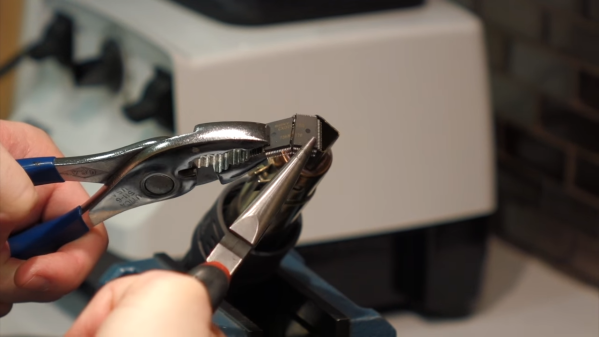Last week we saw a hapless container ship vaulted to fame, where people converged on its combination of mind-boggling size suffering an easily relatable problem of getting stuck. Now that it is moving again, armchair engineers who crave more big ship problem-solving should check out [David Tracy]’s writeup on the salvage operation of an overturned car carrier ship, the MV Golden Ray published by Jalopnik. If the ship’s name doesn’t ring a bell, the writeup opens with a quick recap.
Written for an audience of gearheads, [Tracy]’s writeup walks through some technical aspects of the salvage plan and initial results of execution. Citing from the official entity in charge, the St. Simons Sound Incident Response Unified Command, and augmented with information from elsewhere. Even though the MV Golden Ray is “only’ half the length and a third of the gross tonnage of our meme darling MV Ever Given, it is still a huge ship. Every salvage operation this big is unique, requiring knowledge far beyond our everyday intuition. At this scale, most Internet “Why don’t they just…” comments range from impractical to absurd.
Fortunately, people who actually know how to perform salvage work designed plans, submitted by multiple bidders, each making a different tradeoff in cost and speed among other factors. The chosen plan was to cut the ship into sections small enough to be carried by barge for further processing elsewhere. This required a huge floating crane, a chain pressed into cutter duty, custom fabricated lugs for lifting, and similarly custom fabricated cradles for the barges.
But we all know that no plan survives contact with reality. While this plan was seemingly chosen for speed, it hasn’t gone nearly as fast as advertised. Certainly the pandemic was a huge hinderance, but cutting has also been slowed by pieces built far stronger than spec. Delays also meant more sediment buildup inside the wreck, compounding headaches. Other bidders have started saying that if their plan had been chosen the job would be done by now, but who’s to say their plan wouldn’t have encountered their own problems?
In time St. Simons Sound will be cleared as the Suez Canal has been. Results of their respective investigations should help make shipping safer, but salvage skills will still be needed in the future. At least this operation isn’t as controversial as trying to retrieve the radio room of RMS Titanic.


















